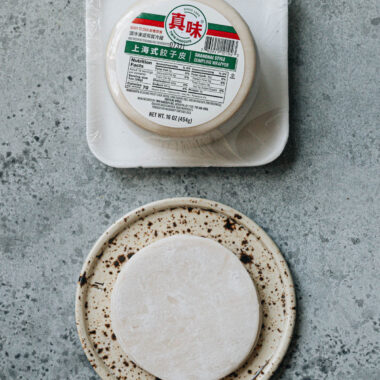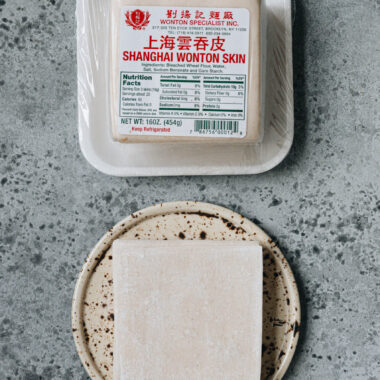
What are Chow Mein Noodles?
Chow mein noodles (炒面) are thin, yellow noodles, mostly made from wheat flour, eggs, and water. Sometimes they are also called egg noodles or pan fried noodles.
‘Chow’ means ‘stir-fried,’ and ‘mein’ translates to ‘noodles’; essentially, they are used to make the stir-fried noodle dishes you have probably eaten in Chinese restaurants. These Asian noodles can be prepared in various ways, either crispy or soft.
What do Chow Mein Noodles Taste Like?
The noodles have a distinctive crisp exterior and slightly chewy interior. Different from the thicker and chewier lo mein noodles, chow mein noodles are a lot thinner with a fluffy texture. They do not soak up as much sauce as lo mein noodles, but can withstand high heat without turning soggy. That’s why they’re sometimes made into crispy pan fried noodles and served with a saucy topping.
Uses for Chow Mein Noodles in Chinese Cooking
Chow mein noodles are often stir-fried with a mix of vegetables, such as cabbage, carrot, pepper, and bean sprouts, plus proteins like chicken and tofu. Fresh aromatics like ginger, garlic and scallion are heavily used for fragrance. Everything is brought together by a savory sauce.
The sauce will vary depending on the recipe, but it’s typically a harmonious blend of light soy sauce, dark soy sauce, and oyster sauce. Add a splash of Shaoxing wine, some sesame oil, and maybe a little sugar and stock for a simple sauce bursting with authentic flavors.
The greatest appeal of chow mein dishes is their flexibility. You can adjust the dish according to the vegetables and proteins in your fridge to make a one-pan dinner.
Classic Stir-Fried Chow Mein
This is the most recognizable stir fry, where noodles are tossed with vegetables, like bok choy, onion, bell peppers, and broccoli, and a protein such as chicken breast or pork. The dish is flavored with ingredients like soy sauce, oyster sauce, and white pepper.
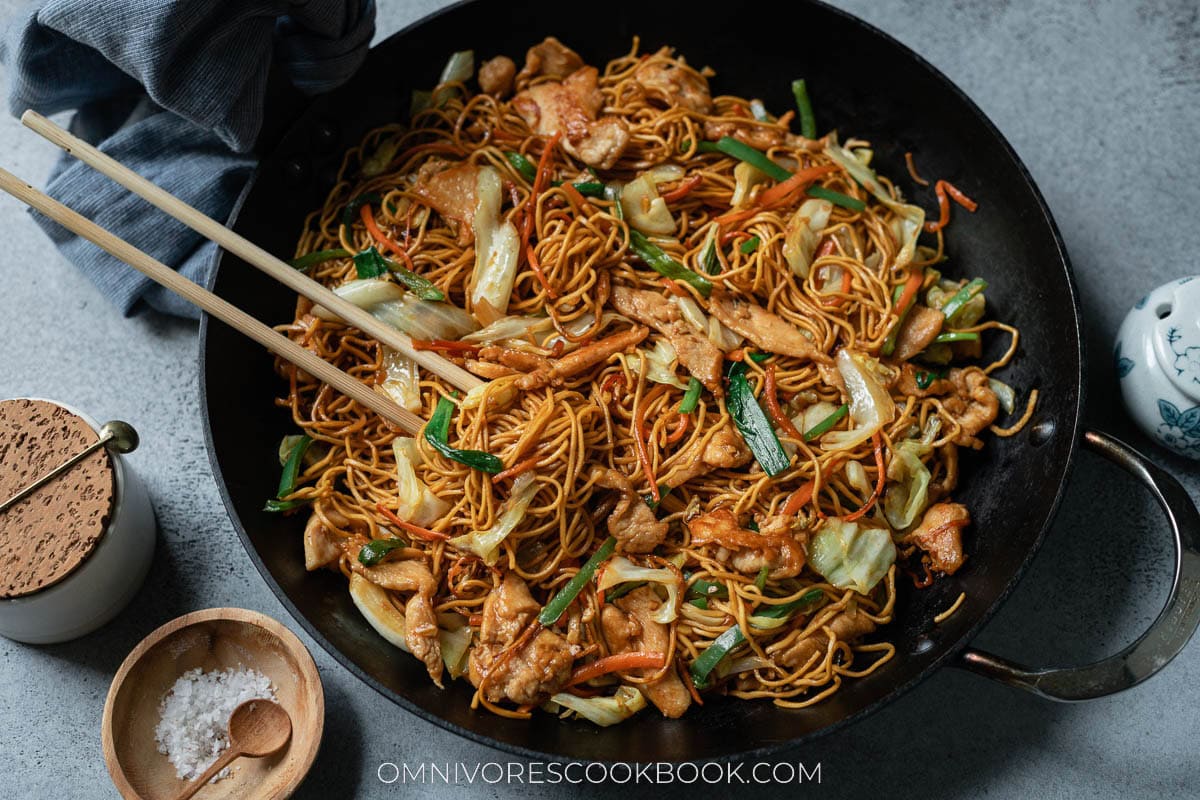
Crispy Pan Fried Noodles
For this one, you pan fry the noodles until golden crispy to create a crunchy texture, then complete it with a saucy stir fried topping made with protein and plenty of vegetables.
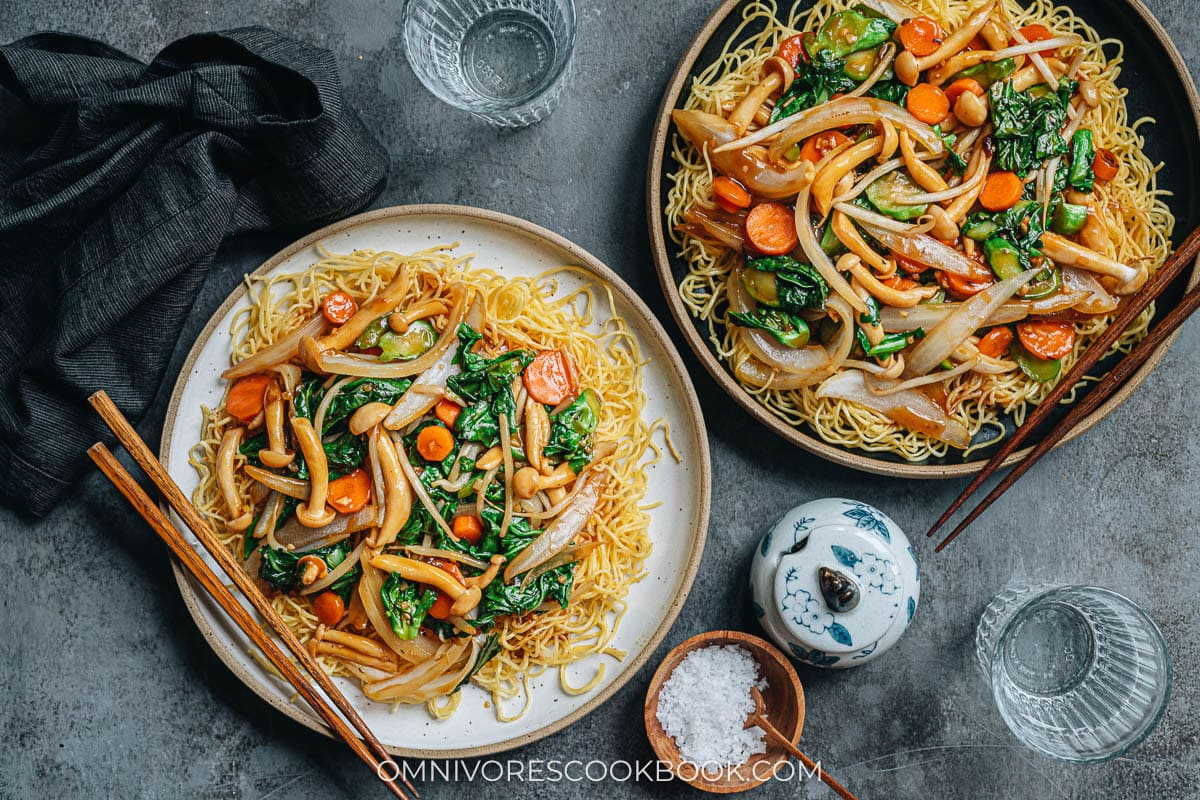
How to Shop for Chow Mein Noodles
Look for packaged chow mein noodles in Chinatown, large Asian markets such as H Mart or Ranch 99, or the Asian aisle of your local supermarket. Fresh or semi-dried noodles are the best if you can find them. They are often stored in the fridge or freezer section of Asian grocery stores. If not available, dried noodles work as well.
Here are some of my favorite types of chow mein noodles:
- Twin Marquis Chow Mein Noodles: These are fresh noodles that provide the best texture and mouthfeel.
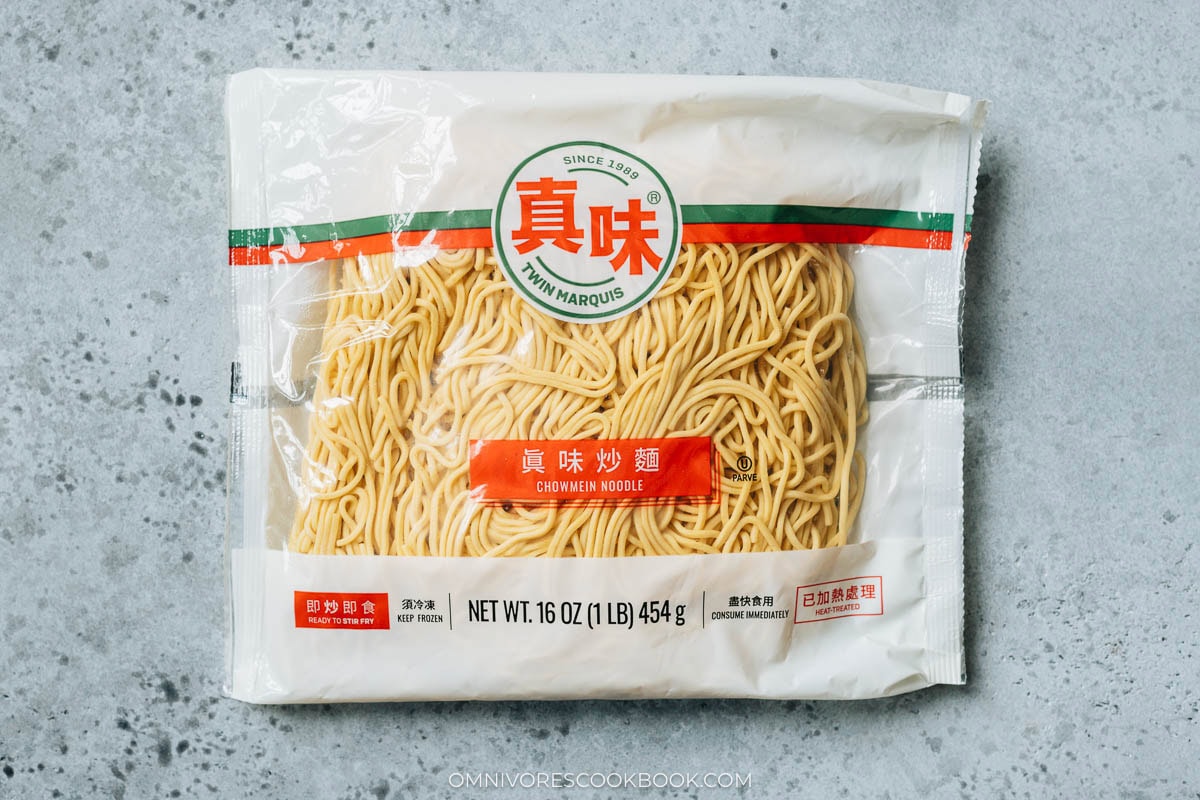
- Pan Fried Noodles: You may see noodle packages saying Hong Kong Style Pan Fried Noodles, or Pan Fried Chow Mein Noodles. They are made with the same ingredients as chow mein.
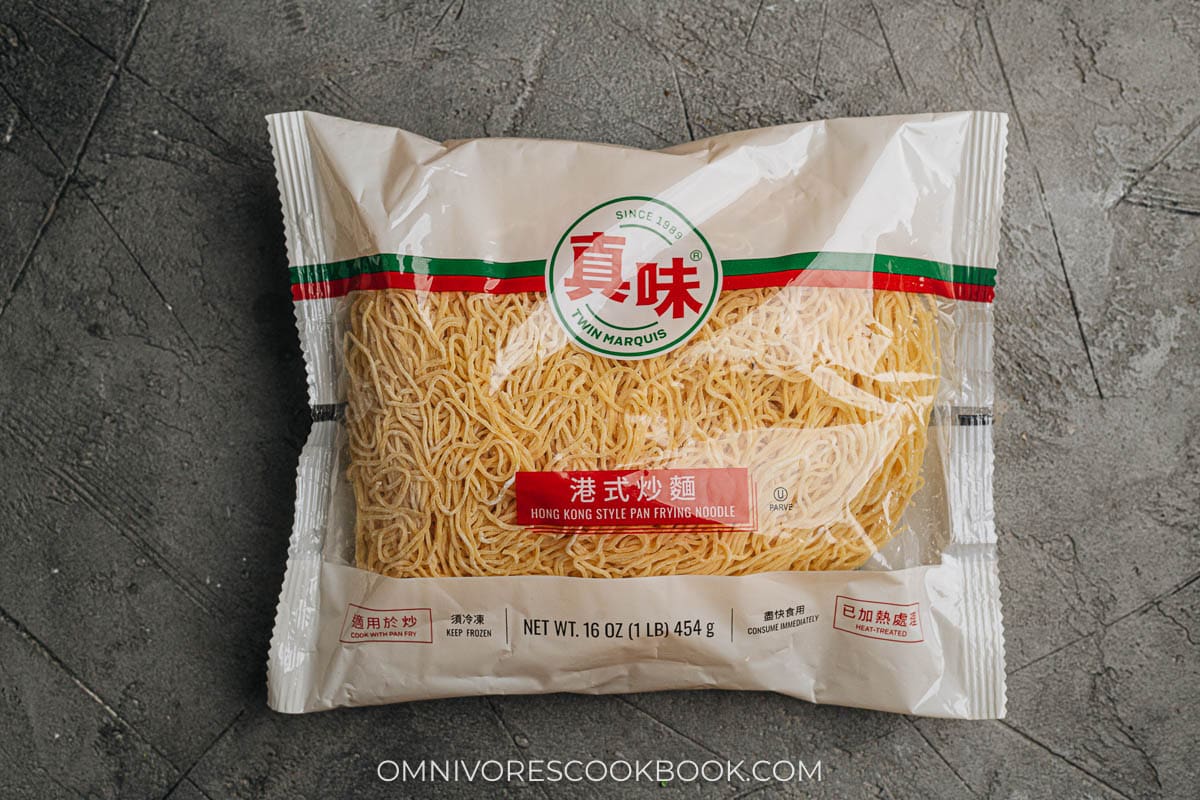
If none of the fresh types are available, try out Wel-Pac Chow Mein Noodles, which you can find on Amazon.
How to Store Chow Mein Noodles
- Dried Noodles: Once open, store the remaining noodles in an airtight container or bag in a cool, dark area. They should be fine in your pantry for a couple of months.
- Fresh noodles: Store them in the freezer and thaw them overnight in the fridge when you’re ready to use them. Thawed fresh noodles last in the fridge for 3 to 4 days. The semi-fresh noodles such as Hong Kong Pan Fried noodles can be stored in the fridge for 1 to 2 weeks if unopened. But I recommend using them as soon as possible once opened, otherwise they will get moldy quite quickly.
Substitutions for Chow Mein Noodles
If you are craving chow mein but don’t have the exact type of noodles for the classic version, there’s no need to worry—you have plenty of delicious alternatives to try:
- Japanese Style Yakisoba Noodles: Yakisoba noodles are made for Chinese style fried noodles in Japanese cooking. These yellow alkaline noodles do not contain egg, but they offer a similar chewy texture due to the kansui used in the noodles. They are super convenient because they are usually heat treated and can be used directly in the stir fry without boiling.
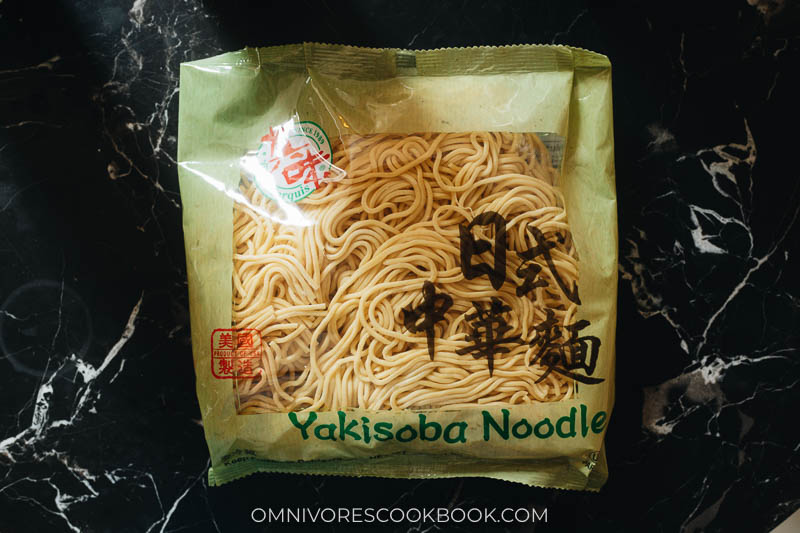
- Ramen noodles: They are another fantastic choice, as they are also alkaline noodles that have a chewy texture. Sometimes you can find fresh ramen noodles at big grocery stores such as Whole Foods in the refrigerated section.
- Wheat noodles that are about 1/16″ (2mm) thick: A lot of wheat noodles are designed for making noodle soup or noodles with sauce. But as long as you parboil them until al dente (I usually cook them 2 minutes less than package indicates), they will have a nice texture in the stir fry.
- Spaghetti or linguine: They work in a pinch too! Both have a chewy texture and they hold up well in the stir fry.
Don’t let ingredient variations deter your cooking journey. These substitutes pair well with Asian-inspired ingredients while satisfying that chow mein craving.
FAQs
Cooking with chow mein noodles is an excellent way to start making simple and tasty Chinese dishes. Below are some frequently asked questions about chow mein noodles.
What’s the difference between chow mein and lo mein?
Chow mein are thinner and have a fluffier texture than lo mein noodles. For cooking, chow mein might involve frying the noodles until slightly crispy, while lo mein noodles are typically tossed with sauce after boiling for a chewy and tender texture.
What sauces work best with chow mein?
A brown sauce usually works very well. It often uses light soy sauce, dark soy sauce, oyster sauce, and a hint of white pepper, typical for a savory base. White sauce usually works with chow mein and chicken. It is a chicken stock based sauce that is lightly seasoned with soy sauce and sesame oil.
How can I prevent my noodles from sticking?
Ensure your pan is hot, and use a generous amount of oil so the noodles are properly coated in oil or sauce during cooking.
If using a carbon steel or cast iron wok, make sure your pan is properly seasoned. You can also use a nonstick pan to minimize sticking.
Recipes Using Chow Mein Noodles
- Beef Chow Mein: – A melt-in-your-mouth beef version
- Chicken Chow Mein – Tender chicken thighs or breasts with stir-fried veggies and noodles.
- Vegetarian Chow Mein – A plant-based twist on the classic.
- Beef Pan Fried Noodles – The noodles are pan fried until crispy, then topped with a rich stir fry with beef, vegetables and brown sauce.
- Vegetable Pan Fried Noodles – Crispy pan fried noodles topped with colorful veggies including gai lan, carrots, mushrooms and onion.
- Soy Sauce Pan Fried Noodles (广式豉油皇炒面) – A Cantonese classic, featuring crispy noodles tossed with soy sauce and green onions.
- Seafood Chow Mein – A seafood lover’s dream, mixing various seafood with noodles and veggies.
- Shrimp Chow Mein – An authentic version of juicy shrimp and noodles cooked to perfection.
- Garlic Noodles – A simple yet flavorful creation.

